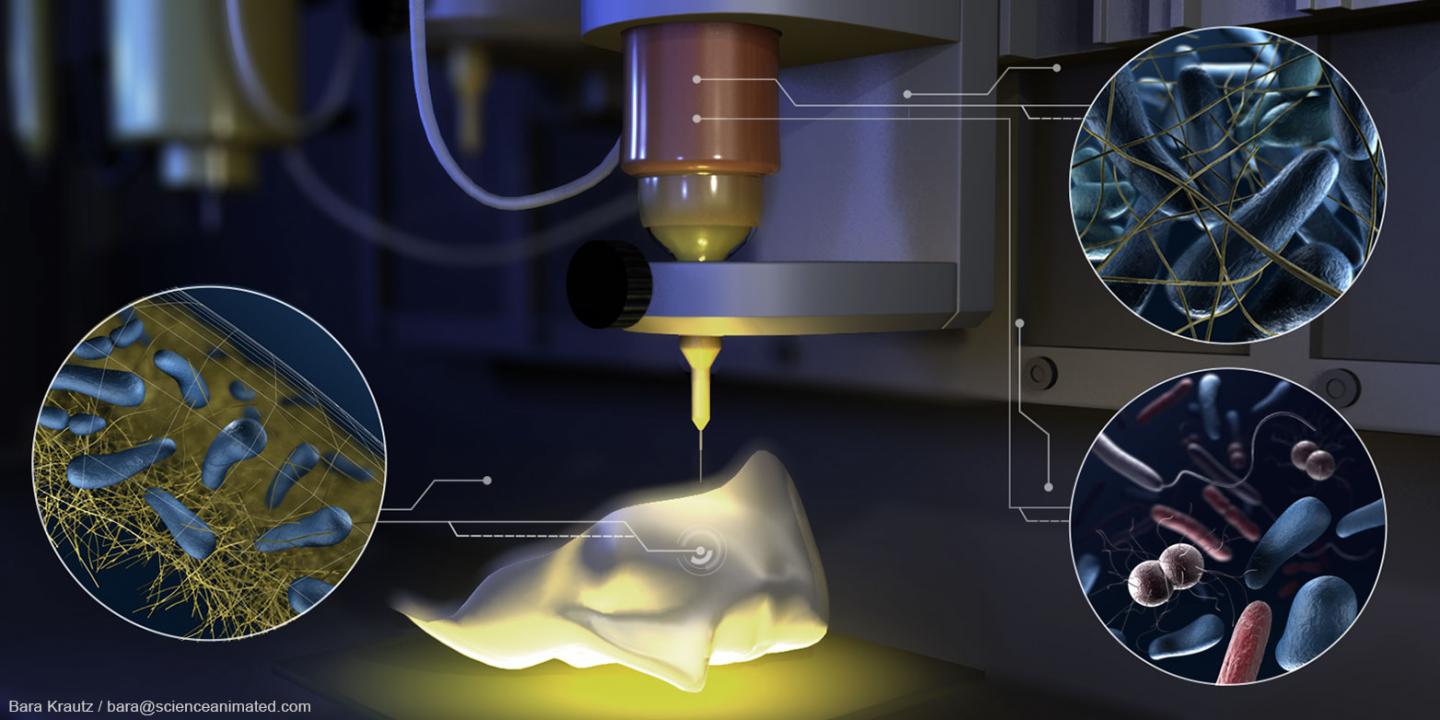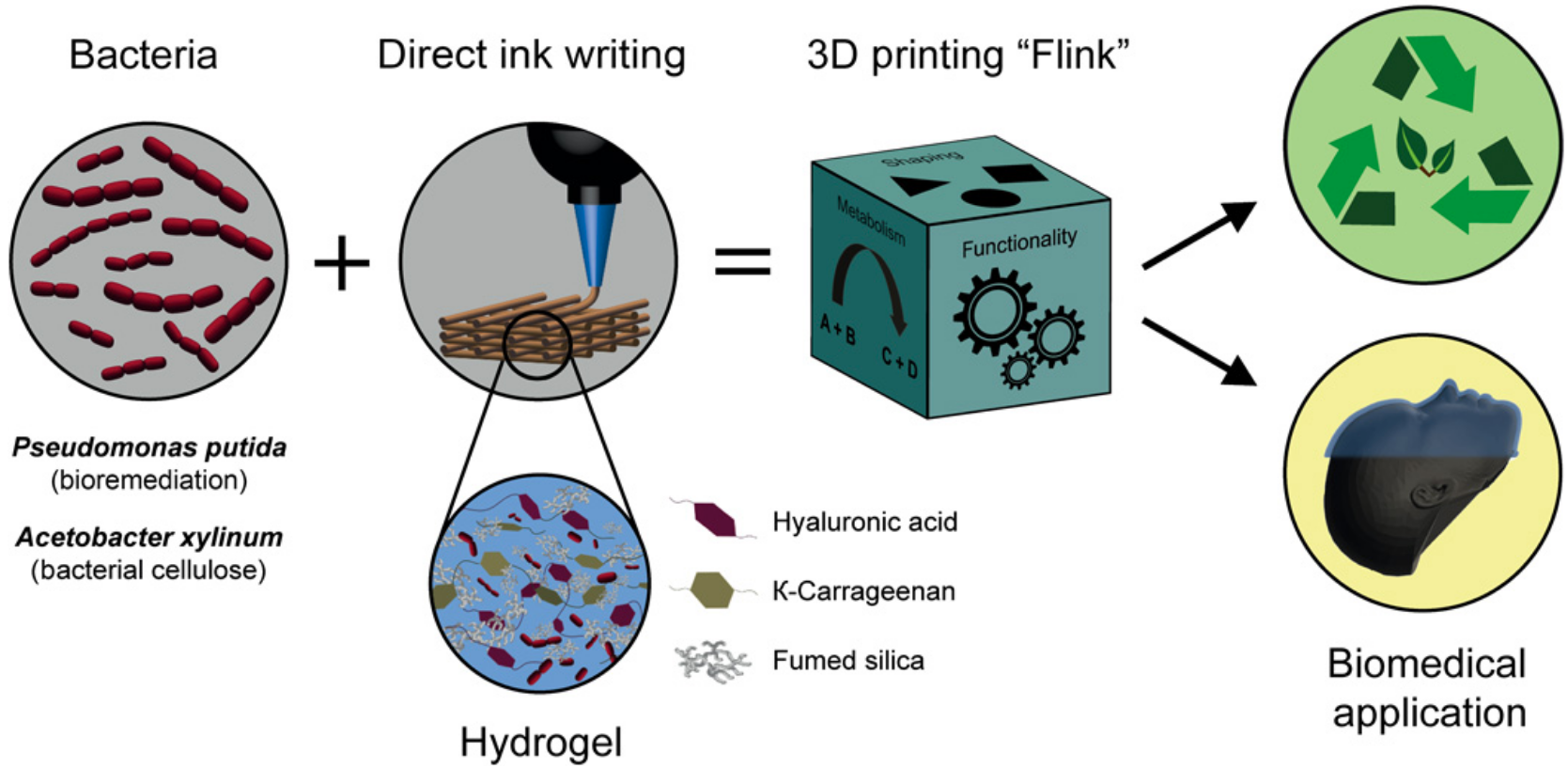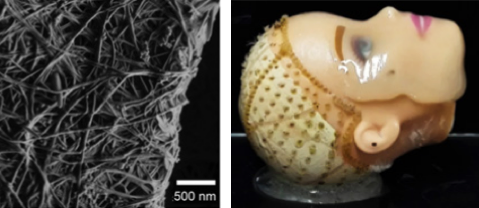3D-printing biocompatible living bacteria
December 8, 2017

3D-printing with an ink containing living bacteria (credit: Bara Krautz/[email protected])
Researchers at ETH Zurich university have developed a technique for 3D-printing biocompatible living bacteria for the first time — making it possible to produce produce high-purity cellulose for biomedical applications and nanofilters that can break down toxic substances (in drinking water, for example) or for use in disastrous oil spills, for example.
The technique, called “Flink” (“functional living ink”) allows for printing mini biochemical factories with properties that vary based on which species of bacteria are used. Up to four different inks containing different species of bacteria at different concentrations can be printed in a single pass.

Schematics of the Flink 3D bacteria-printing process for creating two types of functional living materials. (Left and center) Bacteria are embedded in a biocompatible hydrogel (which provides the supporting structure). (Right) The inclusion of P. putida* or A. xylinum* bacteria in the ink yields 3D-printed materials capable of degrading environmental pollutants (top) or forming bacterial cellulose in situ for biomedical applications (bottom), respectively. (credit: Manuel Schaffner et al./Science Advances)
The technique was described Dec. 1, 2017 in the open-access journal Science Advances.

(Left) A. xylinum bacteria were used in printing a cellulose nanofibril network (scanning electron microscope image), which was deposited (Right) on a doll face, forming a cellulose-reinforced hydrogel that, after removal of all biological residues, could serve as a skin transplant. (credit: Manuel Schaffner et al./Science Advances)
“The in situ formation of reinforcing cellulose fibers within the hydrogel is particularly attractive for regions under mechanical tension, such as the elbow and knee, or when administered as a pouch onto organs to prevent fibrosis after surgical implants and transplantations,” the researchers note in the paper. “Cellulose films grown in complex geometries precisely match the topography of the site of interest, preventing the formation of wrinkles and entrapments of contaminants that could impair the healing process. We envision that long-term medical applications will benefit from the presented multimaterial 3D printing process by locally deploying bacteria where needed.”
* Pseudomonas putida breaks down the toxic chemical phenol, which is produced on a grand scale in the chemical industry; Acetobacter xylinum secretes high-purity nanocellulose, which relieves pain, retains moisture and is stable, opening up potential applications in the treatment of burns.
Abstract of 3D printing of bacteria into functional complex materials
Despite recent advances to control the spatial composition and dynamic functionalities of bacteria embedded in materials, bacterial localization into complex three-dimensional (3D) geometries remains a major challenge. We demonstrate a 3D printing approach to create bacteria-derived functional materials by combining the natural diverse metabolism of bacteria with the shape design freedom of additive manufacturing. To achieve this, we embedded bacteria in a biocompatible and functionalized 3D printing ink and printed two types of “living materials” capable of degrading pollutants and of producing medically relevant bacterial cellulose. With this versatile bacteria-printing platform, complex materials displaying spatially specific compositions, geometry, and properties not accessed by standard technologies can be assembled from bottom up for new biotechnological and biomedical applications.